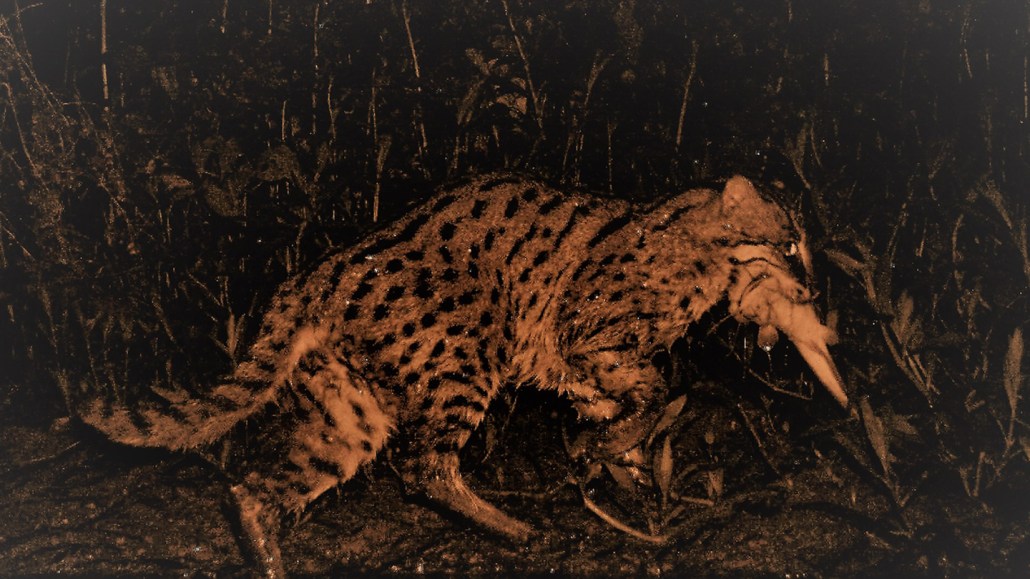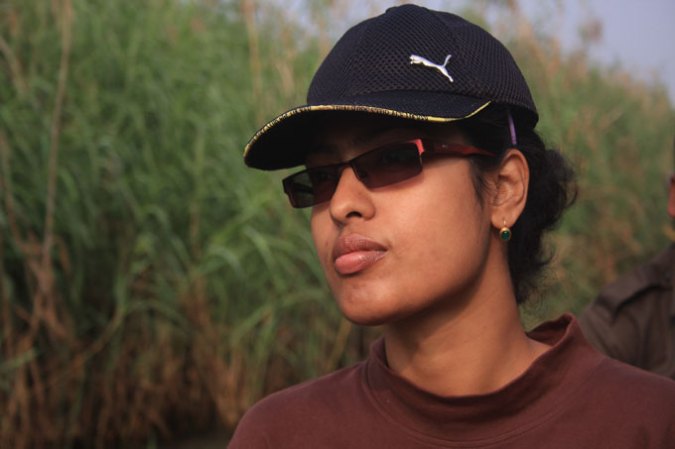Scientists uncover the secret to fishing cats’ hunting success
In deep water, the wild feline keeps calm and fishes on

A camera trap captured this image of a fishing cat (Prionailurus viverrinus) emerging from a lagoon in India with a freshly caught fish. A network of camera traps has helped to explain the hunting secrets of this mysterious species.
The Fishing Cat Project
- More than 2 years ago
When the famously enigmatic fishing cat hunts in deep water, it keeps calm and stays still. At least, most of the time.
Asia’s Prionailurus viverrinus prowls swamps and marshes at night, searching for fish that could make for a nutritious meal. Depending on how deep the water is, the wild feline switches its hunting strategy to maximize its energy gain, scientists report December 24 in Mammalia.
The report offers “the first detailed look at how the fishing cat hunts,” says coauthor Tiasa Adhya, a Kolkata-based biologist. One of the foremost experts on the species, Adhya in 2010 cofounded The Fishing Cat Project — the longest-running fishing cat research and conservation project in the world.
Just over a decade ago, the fishing cat was among the least-studied wild felines in the world. To raise awareness among local communities and gather data on the medium-sized cat, the project launched the Know Thy Neighbor initiative in 2016. More than 20 people living near three prime fishing cat habitats on India’s east coast — including Chilika, the largest brackish water lagoon in Asia — were trained to install camera traps in their respective neighborhoods.

One of the volunteers, Subas Behera, is a fisherman who lives near Chilika in Bhusandapur village. Each evening, Behera would place a camera trap at a predetermined location and remove it the next morning to avoid theft or damage. He has, with great affection, named the female fishing cat recorded by his camera trap ‘Choti,’ meaning small, after her one short, back leg.
“A fishing cat thinks just like a fisherman,” Behera says. “We’re both constantly thinking about where the fish are.”
Divyajyoti Ganguly, a wildlife biology master’s student at the National Centre for Biological Sciences in Bangalore and coauthor of the study, analyzed 197 videos collected by the camera traps from 2016 to 2018.
In deep water — where much of the cats’ bodies are submerged — the felines tend to wait patiently for the perfect opportunity to strike. They stayed still nearly 52 percent of the time and jumped after prey just 3.9 percent of the time, the videos showed.
This ‘sit and wait’ approach helps fishing cats conserve energy while also increasing the chances of successfully ambushing prey. The fishing cat “thinks hard before jumping in,” Adhya says. “It has to optimize its [energy] gain.”
When hunting in shallow water, fishing cats were more active, patrolling about 96 percent of the time and occasionally pawing the water to flush out fish, Ganguly and Adhya found.
The insight “expands and elaborates on our understanding of the fishing cat’s semiaquatic nature,” says wildlife ecologist Jim Sanderson, founder and director of the Small Wild Cat Conservation Foundation in Corrales, N.M., who was not involved in the study.
Sign up for our newsletter
We summarize the week's scientific breakthroughs every Thursday.
Jaguars in Brazil have been spotted fishing (SN: 10/13/21). But fishing cats have actual physical adaptations to a semiaquatic lifestyle. Their partially retractable claws let the felines hook and hold fish, while their double-layered coats help them stay dry, previous work has shown. The fishing cat is one of only two wild cats in the world with adaptations to be semiaquatic, the other being the flat-headed cat (Prionailurus planiceps) of southeast Asia.
Still, there is more to learn about fishing cats, including just how many there are in the world. To date, there have been no national counts in any of the 10 countries in which the feline is known to exist. The cats do face increasing threats from habitat loss and degradation, as well as human-animal conflict, leading the International Union for the Conservation of Nature to classify the species as vulnerable.
“Living off fish inevitably brings fishing cats into conflict with people doing the same thing,” Sanderson says. “That’s why fishing cat conservation means working with the local people.”





